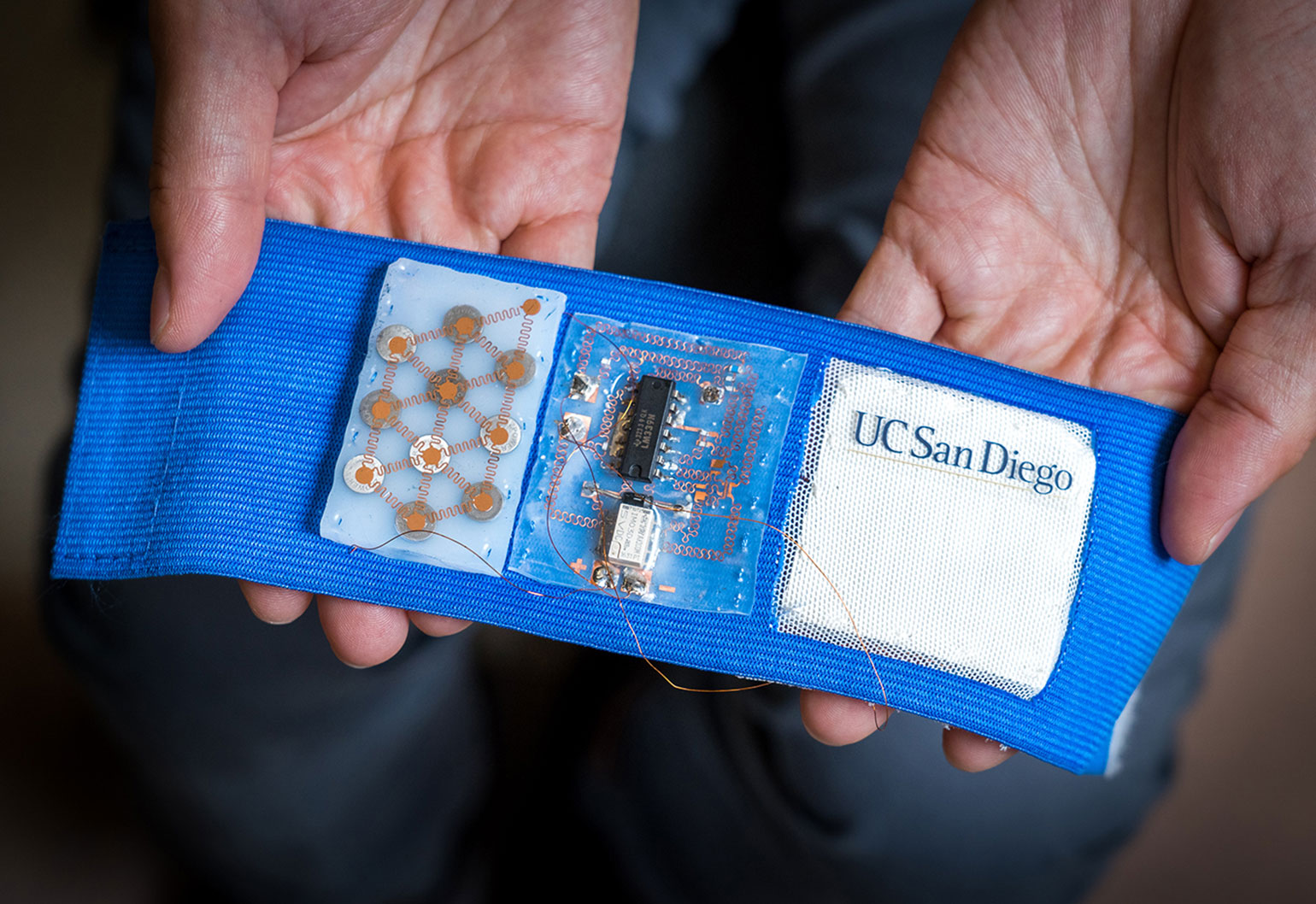Keeping buildings at a comfortable temperature is a significant drain on energy resources. A team of engineers is working on wearable heating and cooling patches that could make a big difference.
In Australia, heating and cooling accounts for an average of 40 per cent of household energy use. This energy is used to keep areas such as living spaces and office complexes at a comfortable temperature for inhabitants. Engineers are working on ways to reduce energy wastage by regulating temperature on a more personal level.
A recent study published in Science Advances investigates a technology with the potential to cut energy consumption by heating or cooling skin with battery-powered patches embedded in clothing.
“This type of device can improve your personal thermal comfort whether you are commuting on a hot day or feeling too cold in your office,” said researcher Renkun Chen, a professor of mechanical and aerospace engineering at the University of California, San Diego.
Chen added that this could reduce energy costs by allowing the ambient temperature in a building to remain closer to outside conditions.
Convenience is key
While other researchers have developed clothing that incorporates metallic nanowire meshes to warm skin to a comfortable heat, practical cooling garments are trickier to develop, as they need ice or channels for cooling fluid to circulate.
Chen’s patch is constructed from thermoelectric alloys embedded between two layers of stretchy elastomer. The thermoelectric component of the patch is made up of small pillars of bismuth telluride alloy soldered to thin copper strips.

The elastomer strips are composed of the rubbery material Ecoflex mixed with aluminium nitride to improve its thermal conductivity, which has proved a hurdle to designing effective flexible personal cooling devices in the past.
With this optimisation, the researchers reported that they were able to achieve cooling of greater than 10ºC for more than eight hours, which they claim has never before been achieved by a flexible and wearable cooling device without the aid of a water heat sink.
Chen and his team were also able to heat skin to 32ºC and keep it there while the surrounding temperature was raised from 22ºC to 36ºC.
Pump action
In order to use the patch for both heating and cooling, the patch uses an electric current to ‘pump’ heat between the elastomer sheets though the thermoelectric pillars. This causes one side of the patch to heat while the other cools.
“To do cooling, we have the current pump heat from the skin side to the layer facing outside. To do heating, we just reverse the current so heat pumps in the other direction,” Chen said.
To make the patch wearable, the researchers embedded it in a mesh armband. They also incorporated a power source: coin battery cells connected with copper wires, also encased stretchy coating. The armband also included a circuit board that can stretch to fit the wearer.
The researchers are aiming to combine a number of patches to create temperature-controlled smart clothing. According to Chen, each patch is 5 cm² with power consumption of up to 0.2 W of power. For a cooling vest, they estimate 144 patches would be needed, with average power use of 26 W, or up to 80 W in extreme heat. For comparison, a conventional air conditioner uses tens of thousands of watts to keep an office cool on a hot day.
While the technology is still at proof-of-concept stage, the researchers hope to achieve commercialisation in the next few years.
“We’ve solved the fundamental problems, now we’re tackling the big engineering issues — the electronics, hardware, and developing a mobile app to control the temperature,” Chen said.